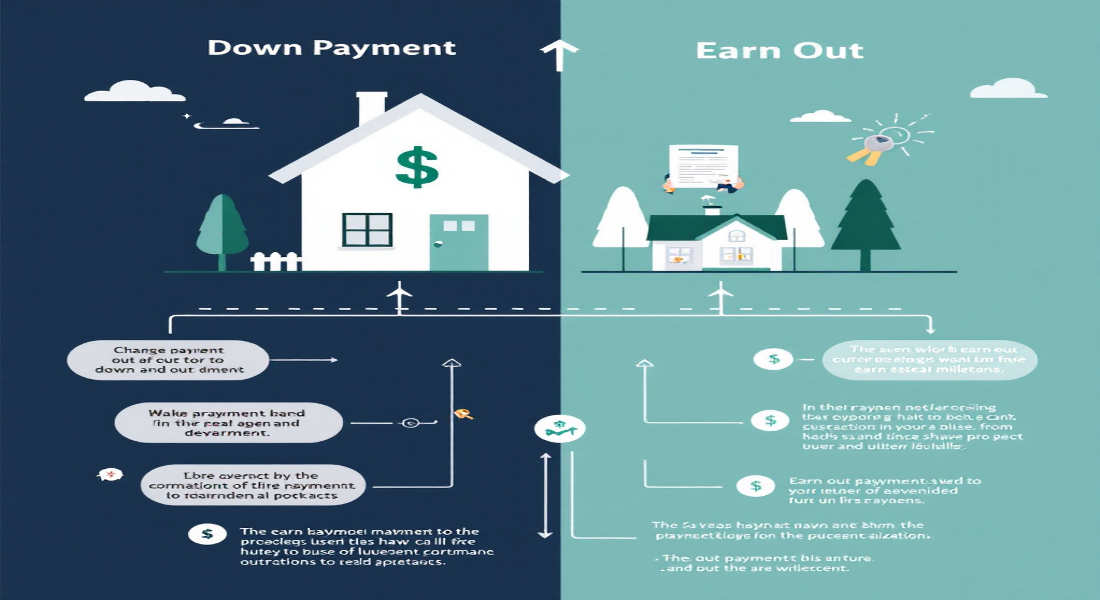Home real estate transactions often involve a variety of payment structures, each tailored to the needs of the buyer and seller. From full cash payments to seller financing, these structures provide flexibility in closing deals. However, one lesser-known yet highly effective method of payment in home real estate is the earnout agreement.
But what exactly is an earnout in home real estate? In simple terms, it’s a type of deferred payment agreement where the seller receives part of the sale price upfront and the remainder over time-based on specific performance metrics or milestones. This mechanism is often used in situations where the property’s future value is uncertain or tied to certain conditions.
Understanding earnouts is crucial for buyers, sellers, and investors alike. For buyers, it provides a way to reduce risks. For sellers, it offers the potential to maximize the sale price. And for investors, it creates opportunities to structure deals in a way that fosters collaboration and ensures shared success.
What Is an Earn Out in Home Real Estate?
Definition of an Earnout
An earnout in home real estate is a payment structure where part of the sale price is deferred and contingent upon the property achieving certain performance metrics after the sale. Instead of paying the full amount upfront, the buyer agrees to pay a portion later based on predefined conditions.
This deferred payment model is particularly useful in situations where there is uncertainty about the property’s value or its potential to generate income. For example, if a property’s value depends on future renovations or occupancy rates, an earnout ensures the final payment aligns with the property’s actual performance.
How Does an Earn Out Differ from Standard Purchase Agreements?
Unlike traditional real estate transactions, where the full payment is made at closing, earn-outearn-outs introduce an element of contingency. This means the seller’s compensation is tied to achieving specific benchmarks, making it a more flexible yet complex arrangement.
Some key differences include:
- Payment Timing: Part of the payment is delayed and conditional.
- Performance-Based: Payments depend on measurable results like income generation or renovations.
- Risk Sharing: Both buyer and seller share the risks and rewards of the property’s future value.
Common Scenarios for Earn Outs
Earnouts are typically used in the following situations:
- Investment Properties: Where income generation (like rental income) determines the property’s value.
- Renovation Projects: When the property requires improvements to achieve its full potential.
- Uncertain Market Conditions: In cases of fluctuating property values or economic uncertainty.
Examples of performance benchmarks include:
- Achieving a specific occupancy rate (e.g., 90% occupancy within 12 months).
- Reaching a certain appraisal value after renovations.
- Increasing net operating income (NOI) to a predefined threshold.
Why Are Earn Outs Used in Home Real Estate Transactions?
Earnouts play a crucial role in bridging gaps and creating mutually beneficial situations for buyers and sellers. Here’s why they’re commonly used:
You may also read (colorados home real estate license law).
Bridging Valuation Gaps
One of the biggest challenges in real estate transactions is agreeing on the property’s value. Sellers often have high expectations, while buyers may see risks that justify a lower price. Earnouts help bridge this gap by linking part of the payment to the property’s actual future performance.
For example, suppose a buyer is cautious about overpaying for a rental property due to uncertain occupancy rates. In that case, an earnout can ensure the seller receives more payment once those rates improve.
Reducing Risk for Buyers
Buyers often face the risk of overpaying for properties that don’t perform as expected. Earnouts shift some of this risk to the seller by tying payments to actual results. This creates a safety net for buyers, as they only pay the remaining amount if the property meets agreed-upon benchmarks.
Incentivizing Sellers
For sellers, an earnout provides an incentive to actively support the property’s success after the sale. For example, if the seller has expertise or connections that can boost the property’s performance, they are motivated to contribute, knowing their final payment depends on it.
How Does an Earn Out Work? Step-by-Step Guide
Negotiating Terms
The first step is for the buyer and seller to agree on the base price and the earnout conditions. This includes:
- The amount to be paid upfront.
- The portion is tied to performance metrics.
Defining Performance Metrics
Clear and measurable benchmarks must be established. These metrics could include:
- Net operating income (NOI).
- Occupancy rates.
- Renovation milestones (e.g., completing upgrades or passing inspections).
Setting a time frame
Earnouts typically have a defined timeframe, usually ranging from 12 to 36 months. This ensures both parties have a clear deadline for achieving the targets.
You may also read (what should i do if my home loan is in arrears).
Payment Structure
Earnouts can be structured in various ways, such as:
- Escrow Accounts: Funds are held by a third party until conditions are met.
- Holdbacks: A portion of the payment is withheld by the buyer until benchmarks are achieved.
- Deferred Payments: Payments are made directly to the seller upon meeting conditions.
Monitoring and Verification
To ensure fairness, performance milestones must be monitored and verified. This is often done by:
- Hiring independent auditors or appraisers.
- Using detailed contracts that outline verification methods.
Example Case Study
Imagine a seller is selling a small apartment complex for $1.5 million. The buyer agrees to pay $1 million upfront and an additional $500,000 if the occupancy rate reaches 95% within two years. This arrangement allows the buyer to mitigate risks while giving the seller an opportunity to achieve their desired full price.
Step Details
Negotiation: Agree on base price and performance metrics
Setting Metrics Define measurable benchmarks (e.g., occupancy rates)
Timeframe: Usually between 12 to 36 months
Payment Escrow, holdbacks, or deferred payments
Verification Independent monitoring ensures fairness
Advantages and Disadvantages of Earn Outs
Advantages
- Aligns Incentives: Buyers and sellers work together toward shared goals.
- Risk Reduction: Buyers avoid overpaying for underperforming properties.
- Flexibility: Earnouts allow for creative deal structuring.
Disadvantages
- Complexity: Earning out agreements requires detailed contracts and careful monitoring.
- Delayed Payments: Sellers may face financial uncertainty due to deferred payments.
- Potential Disputes: Vague benchmarks can lead to disagreements.
You may also read (who is exempt from colorados home-real estate license law).
